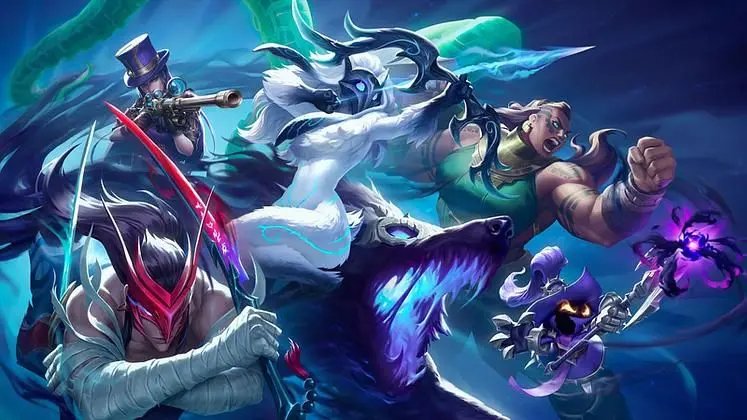The world of PC gaming has undergone an extraordinary transformation over the past 25 years. What began as a niche hobby for tech enthusiasts in the early 2000s has evolved into a global entertainment industry worth billions. From graphical revolutions to new genres, online communities, and innovative business models, the journey of PC games from then to now is a story of constant reinvention and rapid technological progress.
The Early 2000s: A New Digital Frontier
The early 2000s marked a turning point for PC games. Hardware advancements—especially in graphics cards like NVIDIA’s GeForce series and ATI Radeon—opened the door to more realistic 3D environments and sophisticated gameplay systems. Titles such as League of Legends, Half-Life, Baldur’s Gate II, Morrowind, and Warcraft III pushed the boundaries of storytelling and world-building.
This era also saw the rise of modding culture. Fans created their own content, leading to influential projects such as Garry’s Mod and Defense of the Ancients (DotA)—the latter eventually shaping the entire MOBA genre.
2005–2010: Digital Distribution and Genre Expansion
One of the most revolutionary shifts came with Steam’s growing dominance. By the mid-2000s, PCs transitioned from boxed games to digital downloads, changing everything about how players accessed and updated titles. The ability to push patches, DLCs, and complete libraries online laid the foundation for modern live-service models.
During this period, several genres grew rapidly:
- MMORPGs flourished, fueled by the unparalleled success of World of Warcraft.
- Real-time strategy games reached new heights with StarCraft II and Company of Heroes.
- First-person shooters evolved with modern progression systems introduced by games like Call of Duty 4: Modern Warfare.
- Indie games emerged as a powerful creative force thanks to digital platforms. Titles such as Braid, World of Goo, and Minecraft proved that innovation didn’t require blockbuster budgets.
The foundations of today’s gaming landscape—digital storefronts, online patching, and indie accessibility—were firmly established in these years.
The 2010s: Mainstream Breakthrough and the Rise of E-Sports
The 2010s were characterized by unprecedented growth in both the quality and popularity of PC gaming. Graphical improvements, driven by more advanced engines and DirectX 11/12, allowed for massive open worlds and cinematic experiences. Games like Skyrim, The Witcher 3, GTA V, and Fallout 4 offered hundreds of hours of immersive gameplay.
Simultaneously, competitive gaming exploded. Titles such as League of Legends, Dota 2, Counter-Strike: Global Offensive, and Overwatch created an entirely new sports ecosystem. E-sports tournaments filled stadiums, prize pools reached millions, and professional players became global celebrities.
Indie development also continued to thrive. Critically acclaimed games like Hollow Knight, Undertale, Stardew Valley, and Cuphead demonstrated the artistic and emotional depth small teams could achieve.
However, this decade also introduced controversial trends such as microtransactions, loot boxes, and aggressive monetization strategies. Although divisive, they reshaped the financial model of modern PC gaming.
2020s to Today: Realism, AI, and Cross-Platform Freedom
The 2020s have ushered PC gaming into a new age defined by visual realism, technical innovation, and accessibility. Ray tracing brought natural lighting, shadows, and reflections to life, creating truly cinematic environments. Hardware like NVIDIA RTX and AMD RDNA2 GPUs made this technology available to mainstream players.
Artificial intelligence also plays a growing role in modern game development. AI enhances NPC behavior, generates large-scale environments, improves animation, and even assists in game testing.
At the same time, the boundaries between devices have blurred. Cloud gaming services such as GeForce Now and Xbox Cloud Gaming let users play high-end titles without powerful hardware. Cross-platform multiplayer has connected previously separate communities, making gaming more social and inclusive.
Live-service titles—Fortnite, Apex Legends, Valorant, Genshin Impact—continuously evolve with seasons, updates, and in-game events. Yet, the enduring success of single-player masterpieces like Baldur’s Gate 3, Elden Ring, and Cyberpunk 2077 shows that players still crave deep, story-driven adventures.
Conclusion
From LAN parties and boxed CDs to ray tracing, cloud gaming, and global e-sports, the evolution of PC games from the 2000s to today reflects a remarkable blend of creativity and technological advancement. The industry has grown more diverse, more connected, and more ambitious than ever before. And if the past 25 years are any indication, the future of PC gaming will continue to surprise, inspire, and captivate generations of players to come.
For the latest gaming news, follow GameWatcher on BlueSky, check out our videos on YouTube. We sometimes include affiliate links in our posts, which grants us a small commission, thank you. Please support independent Games Media. ❤️






